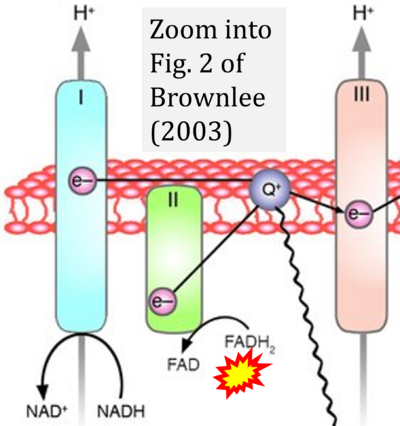Brownlee 2003 J Clin Invest
| Brownlee M (2003) A radical explanation for glucose-induced beta cell dysfunction. J Clin Invest 112:1788-90. https://doi.org/10.1172/JCI20501 |
Brownlee M (2003) J Clin Invest
Abstract: The development of type 2 diabetes requires impaired beta cell function. Hyperglycemia itself causes further decreases in glucose-stimulated insulin secretion. A new study demonstrates that hyperglycemia-induced mitochondrial superoxide production activates uncoupling protein 2, which decreases the ATP/ADP ratio and thus reduces the insulin-secretory response. These data suggest that pharmacologic inhibition of mitochondrial superoxide overproduction in beta cells exposed to hyperglycemia could prevent a positive feed-forward loop of glucotoxicity that drives impaired glucose tolerance toward frank type 2 diabetes.
• Bioblast editor: Gnaiger E
Correction: FADH2 and Complex II
- FADH2 is shown as the substrate feeding electrons into Complex II (CII). This is wrong and requires correction - for details see Gnaiger (2024).
- Gnaiger E (2024) Complex II ambiguities ― FADH2 in the electron transfer system. J Biol Chem 300:105470. https://doi.org/10.1016/j.jbc.2023.105470 - »Bioblast link«
Labels:
Enzyme: Complex II;succinate dehydrogenase


